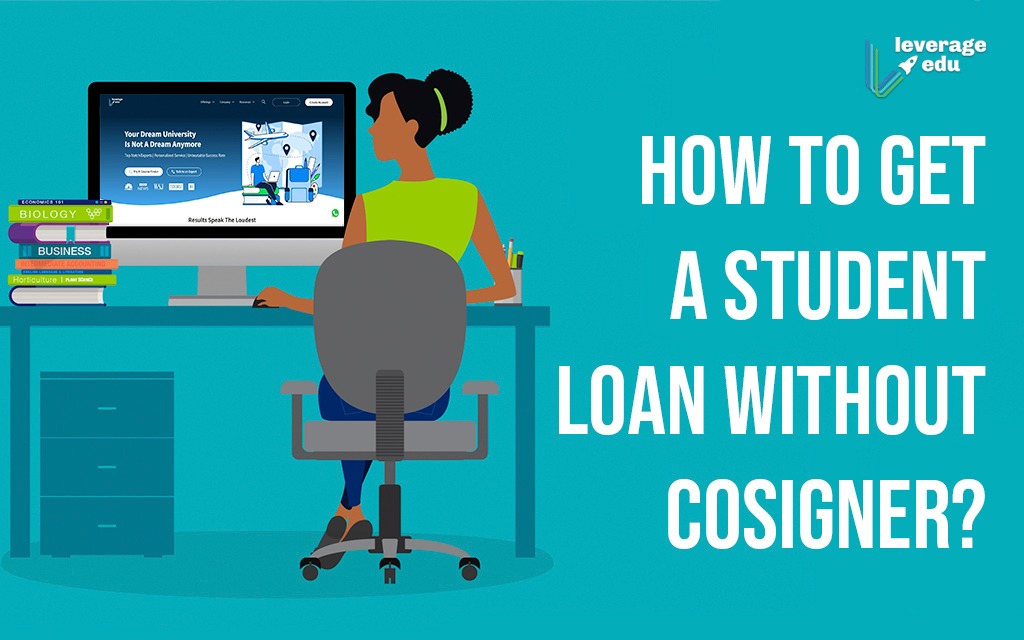Embarking on the journey from poring over textbook pages to realizing dreams at esteemed universities often encounters a formidable obstacle—the steep cost of higher education. Many students find themselves daunted by this financial hurdle, with dreams overshadowed by daunting dollar figures. Enter the savior: student loans! However, what if a cosigner is elusive? Does this mean that the doors to achieving dreams slam shut? The resounding answer is “No.” Going beyond the conventional notions of student loans, this article will uncover alternative paths to secure a student loan without a cosigner, turning seemingly insurmountable challenges into promising opportunities.
- Federal Student Loans: Federal student loans stand out as a prominent option for students without a cosigner. These government-backed loans are crafted with students’ financial challenges in mind. By completing the Free Application for Federal Student Aid (FAFSA), students can access loans such as Direct Subsidized and Unsubsidized Loans, which often come with lower interest rates and flexible repayment plans.
- Explore Private Lenders: While less common, some private lenders offer student loans without requiring a cosigner. Students need to exercise caution when exploring these options, considering potential higher interest rates and less favorable terms. Conducting a comparative analysis, reviewing lender reputations, and understanding terms and conditions are crucial steps.
- Build Your Credit Score: For students eyeing private loans, enhancing their credit score proves instrumental. This not only boosts credibility but also increases the likelihood of loan approval. Initiating with secured credit cards, ensuring timely bill payments, and monitoring credit reports are effective strategies.
- Consider Income-Share Agreements (ISAs): ISAs present an innovative alternative, especially for students confident in their post-graduation earning potential. Under ISAs, students commit to paying a fixed percentage of their income for a predetermined period after graduation. Scrutinizing terms is crucial to ensure they are favorable and sustainable.
- Scholarships and Grants: Representing free money that requires no repayment, scholarships and grants can significantly alleviate financial burdens. Students should dedicate time to seek opportunities at local, state, and national levels, exploring niche scholarships tailored to specific criteria.
- Part-Time Work and Work-Study Programs: Balancing work and study may be challenging but rewarding. Schools often offer work-study programs accommodating academic schedules. Additionally, part-time jobs, both on and off-campus, can supplement income and provide relevant experience.
Additional Tips:
- Negotiate Tuition Fees: Negotiating tuition fees with the college is a viable option. Some institutions may be willing to offer reductions or payment plans to enhance affordability.
- Explore Community Colleges: Commencing education at a community college, known for being more affordable, allows students to save before transferring to a four-year institution.
- Consider Online Learning: Online courses and degree programs provide a cost-effective alternative, reducing expenses associated with on-campus living, commuting, and other related costs.
In Conclusion: Securing a student loan without a cosigner may seem challenging, but myriad options exist to navigate this hurdle. By combining federal aid, private loans, scholarships, and practical work, students can feasibly fund their higher education journey. Diligence, research, and creativity are key, ensuring that the investment in education is a stepping stone to a brighter, opportunity-rich future.
Always prioritize understanding the financial implications, interest rates, and repayment expectations associated with any funding option. This proactive approach ensures that the pathway to higher education is not just accessible but also financially manageable in the post-graduate phase.
